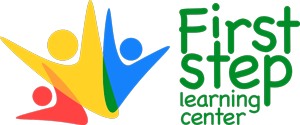Here is where everything starts to make sense. We explain how things work. We encourage them to solve problems, ask questions, and make choices.

Teaching Areas | First Step Learning Center
Here is where everything starts to make sense. We explain how things work. We encourage them to solve problems, ask questions, and make choices.
Everything is more entertaining through acting.
Therefore if you have to explain the operation of a phone, children play to make a call and act as if everything is real, even if the phone they use is a banana.
In addition, the Pre-School classroom has an area dedicated to acting, where the children dress up, transforming the room into a beauty salon or a kitchen.
We teach children to take care of themselves and to be independent.
Activities are carried out to help them develop fine and gross motor skills.
Children learn to use the bathroom. They also learn to create healthy eating habits. We teach them about vegetables and healthy foods.
We take them by the hand in their transition from bottle to cup, and from liquid to solid food. For the gross motor skills development, they have a daily exercise routine, including Zumba classes.
Rest is also necessary for healthy development, so napping is part of the routine.
For the fine motor skills development, we give Pre-Schoolers magazines and scissors for them to find and cut out all the yellow circles they can find. We guide others to paint with their own hands.
This is an essential skill. We teach them to communicate effectively.
Receptive and expressive languages are developed by reading books, interacting, singing, conversing, and writing.
Our teachers also teach them to communicate through gestures and signs.
We choose a day where everyone brings their favorite toy. They show it to their friends and explain why they decided that toy. They talk about the person who gave it to them, why they like it, the meaning of its name, etc. Some present them as a character, giving voice to the toy.
Children express their way of seeing the world and interpreting things through sound, dance, drawing, and theater.
Children make crafts with materials such as modeling clay, sand, and felt while gaining different sensory experiences. The sandbox is one of the favorite places to explore.
A blank sheet and markers, serve to practice free expression.
We also choose a boy or girl as the leader of the “Circle Time.” The leader selects a book and tells it in the middle of the circle to his/her teammates. He/She uses his imagination according to the drawings he/she sees in the book (since they still can’t read).
We open the doors to the world of numbers, including patterns, measures, and shapes.
We teach them to count through songs, and we create games to learn geometric figures.
Children learn the first concepts of science. We entertainingly teach them about living beings, the planet, and space.
We bring a “little egg” to the classroom and observe how it turns into a caterpillar. Then we take care of the chrysalis until it becomes a butterfly. We explain the four seasons of the year through reading and art.
Using baking soda, vinegar, and foil, we simulate the eruption of a volcano. Seeing their little surprise faces when the “lava” comes out never ceases to amaze us.
Children learn the organization of the people around them, their family, the community, and the world.
We celebrate cultural differences by showing them flags and customs from a variety of countries.
Children also learn the days of the week and how to follow a schedule.
SOCIAL AND EMOTIONAL DEVELOPMENT
We help children understand their emotions and how to play with others. Our teachers invite and promote dialogue between them.
Examples of activities:
In front of a mirror, the little ones imitate faces with different moods, which are then discussed in the classroom.
We also celebrate Community Helper Day. In which the children come dressed as the public safety servicemen/women of their choice, and explain the reason for the election. The classroom gets filled with young police officers, doctors, firefighters, and other professions.
During the “Circle Time,” they sing the emotions song. To the rhythm of the music, the teacher asks them to express with their bodies: joy, sadness, and other emotions.